Early 21CTools: jT’10
The first freecom (1&2), Alpha and HD11 are the foundations for a 2C Tools aquatint print series. They have been successful proofed and currently lie flat under drying boards. jT’10 is the 4th tool to be treated as an aquatint.
A Rosin dusting of 5minutes was applied to a 300x350mm plate. Once fused under the gentle, uniform Bunsen flame a bitumen resist was screenprinted on to the plate and etched for 21 minutes. On review the magnified image through the loupe did not look deep enough. The aquatint did not look to be prominent with few of the islands of melted dust needed to create the etch chasms. A proof was taken which displayed a very thin grey image.
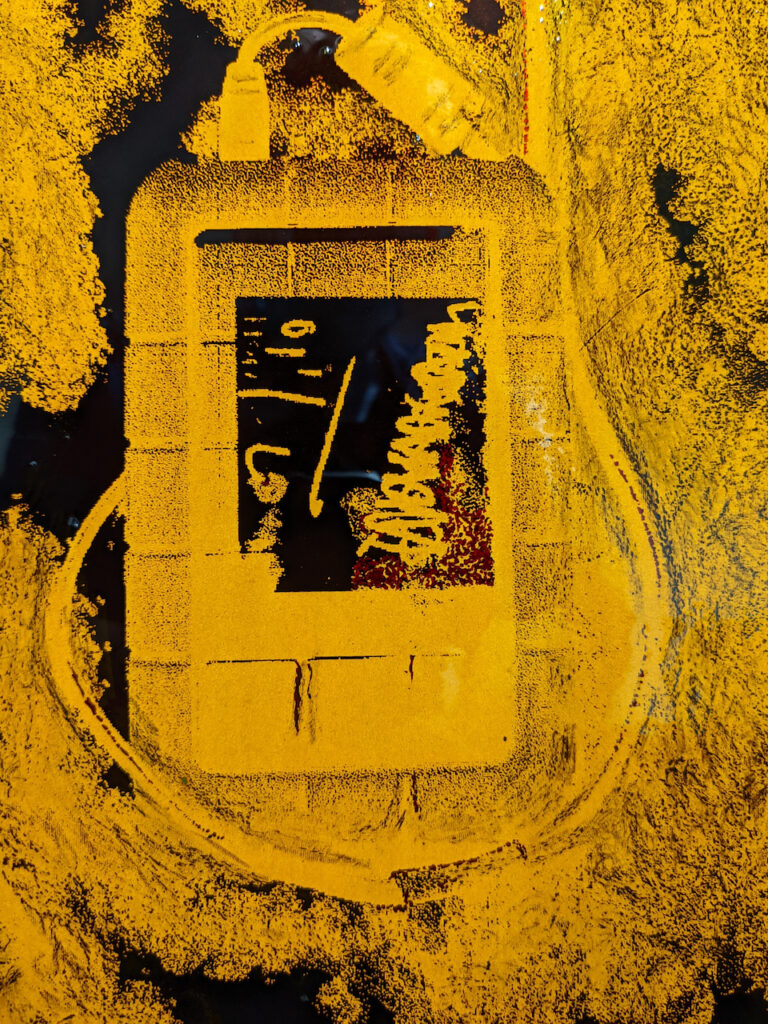
21 min etch CU 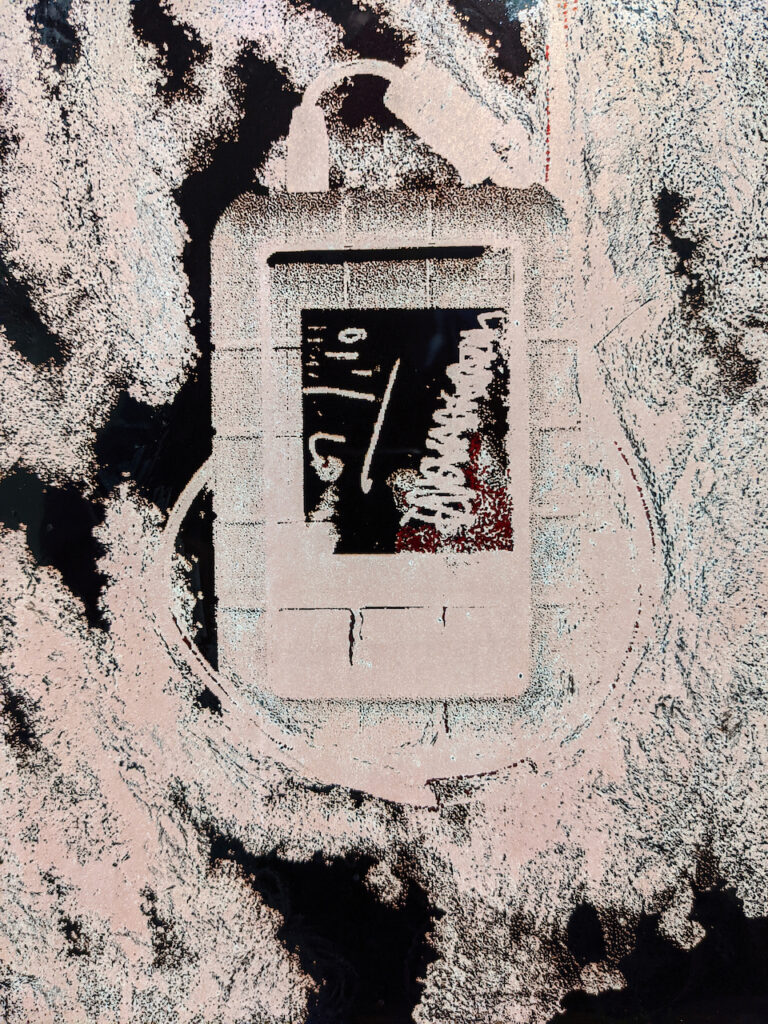
21 min etch washed cu 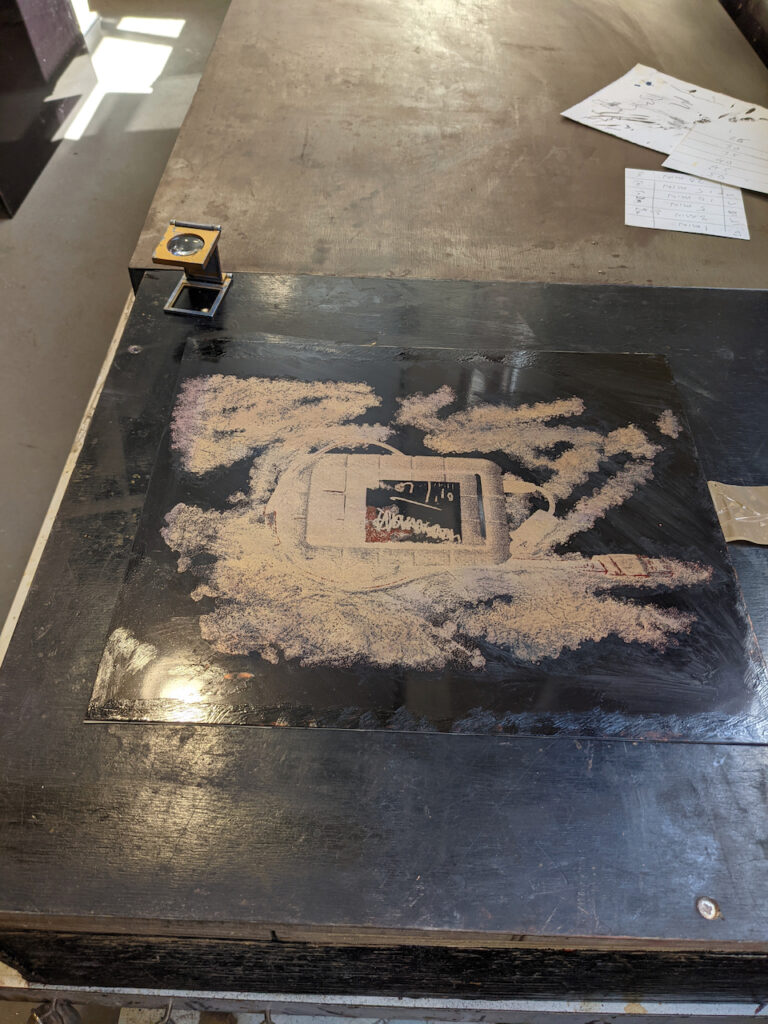
Review 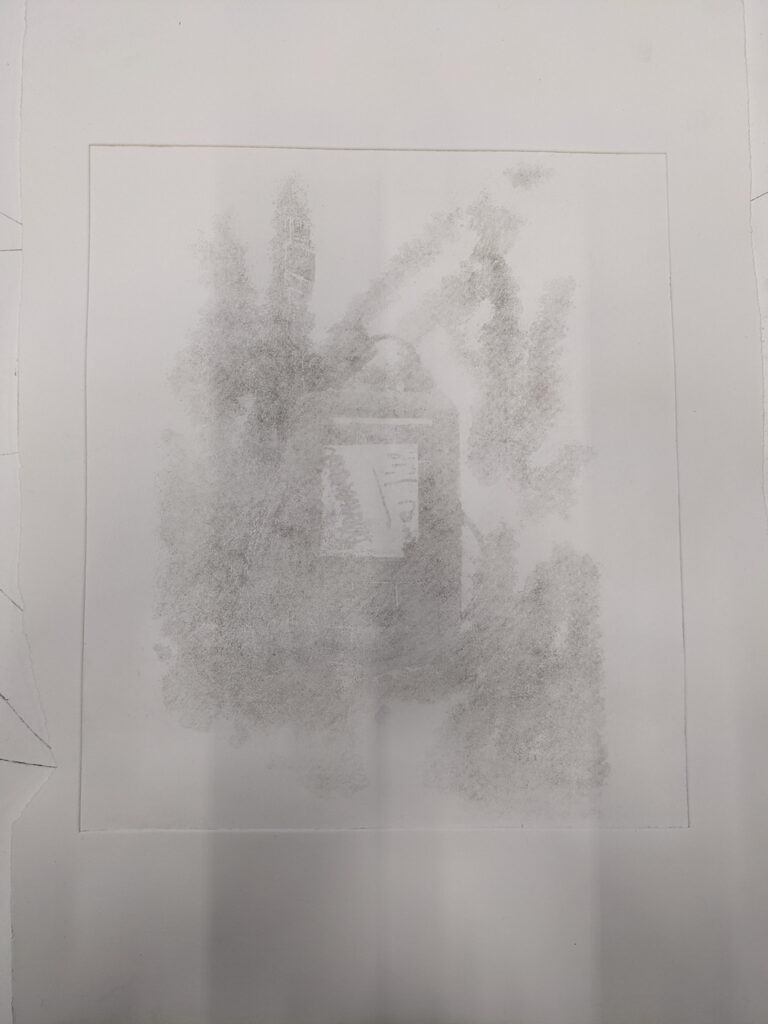
First aquatint proof. Weak
The etch was so slight that rather than beginning a new plate, a radical decision with no guarantee of success, was taken to clean the plate back to the copper and re aquatint over the first application. This strategy is fraught with difficulties in terms of registration for a second etch and whether the second aquatint would take well and uniformly on the first etch. A new aquatint was laid and fused.
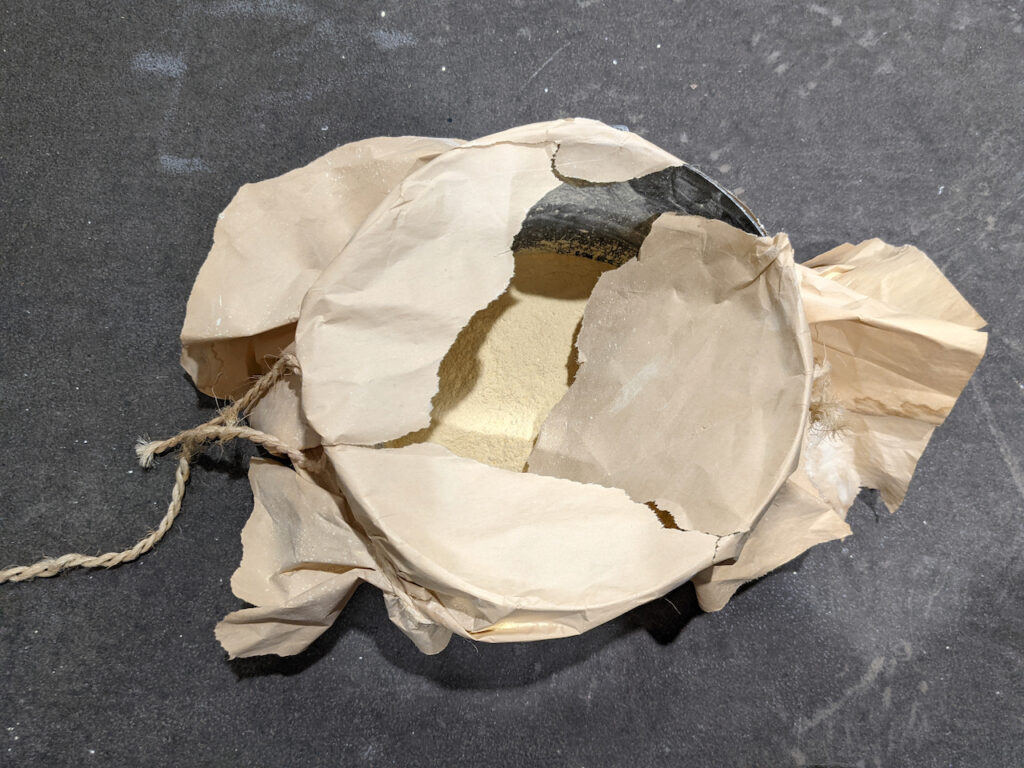
Rosin pot 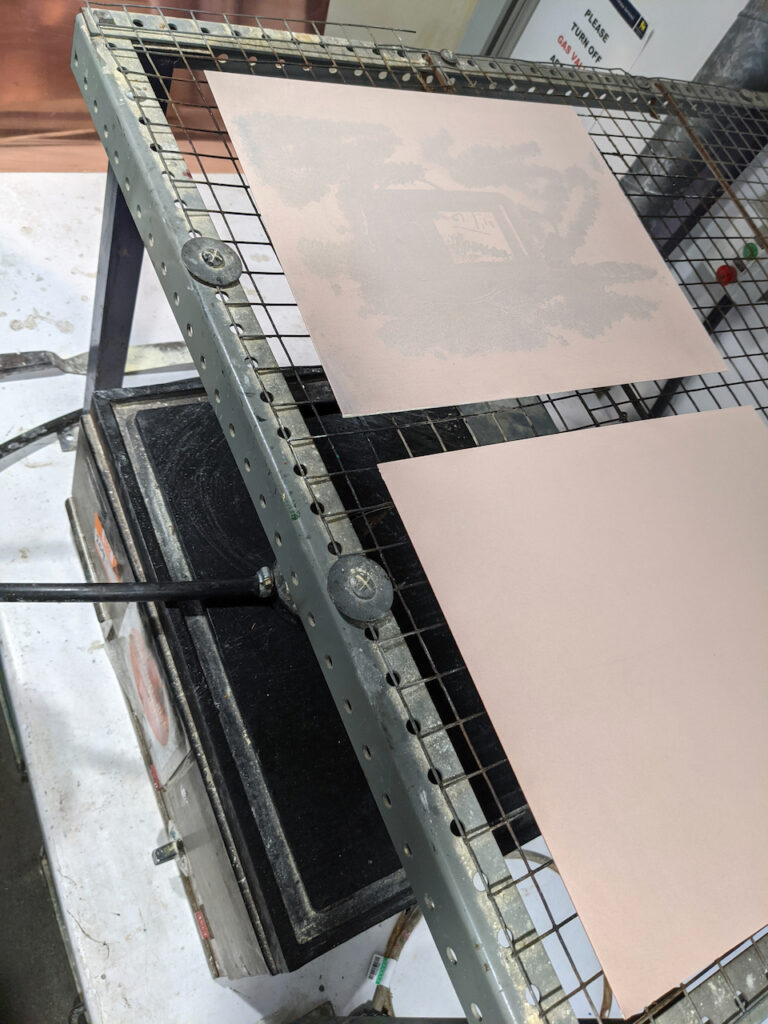
two plates dusted 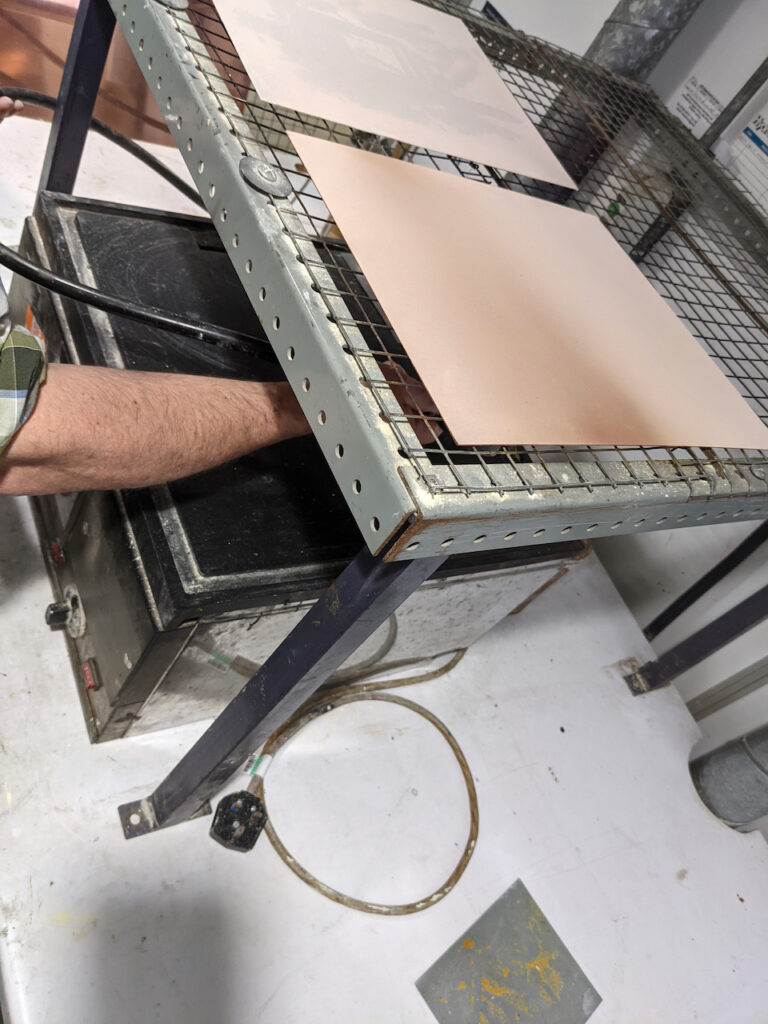
Heated 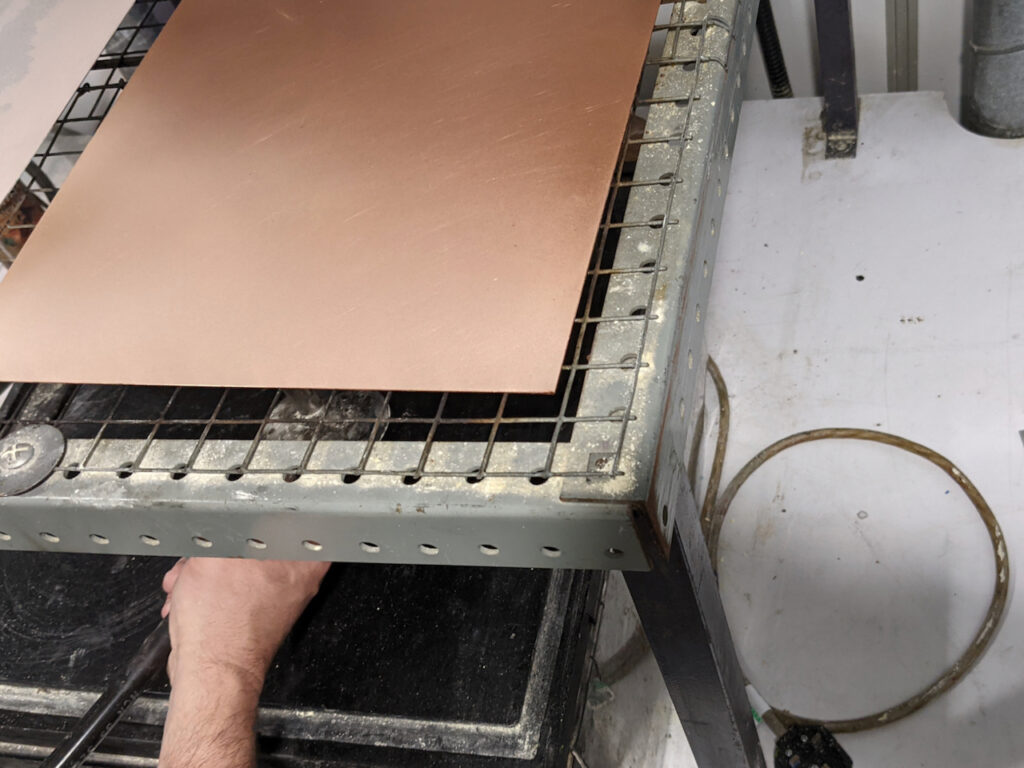
melting 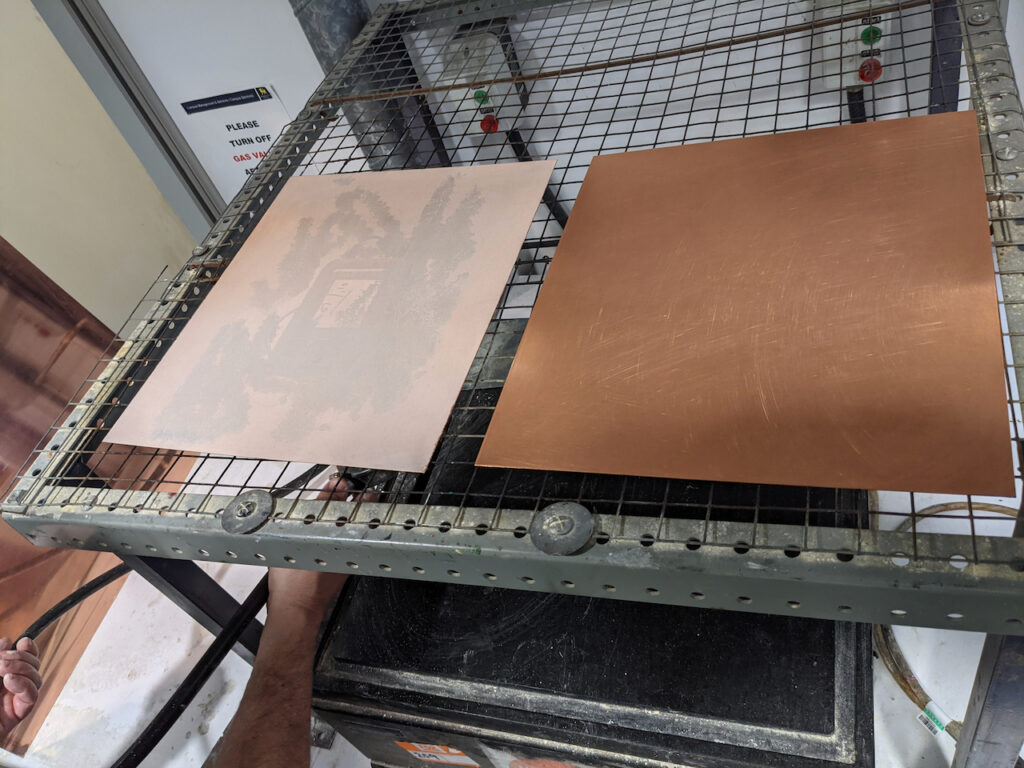
melted and on to number 2 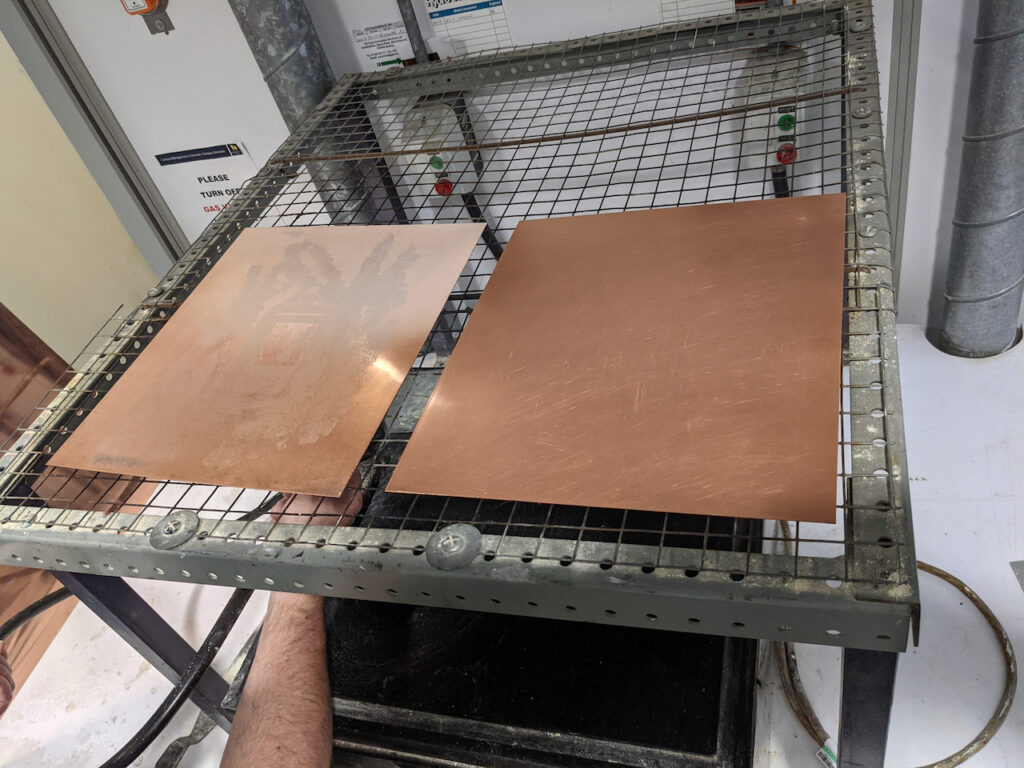
A second application of the screen printed bitumen resist was precisely registered over the original etched image, and etched for 30 minutes. A proof was taken which revealed the register was accurate and although more substantial in ink depth the image still lacked contrast and substance. A further proof with a more ‘buttery’ ink consistency with added oil enhanced the print, but the differentiation between the hard disk, cable and background marks was slight. The background marks had a textured quality, but the figurative disk was lost within an overall monotone which deterred from the intention of the tools series to contrast the electronic box with gestural marks.
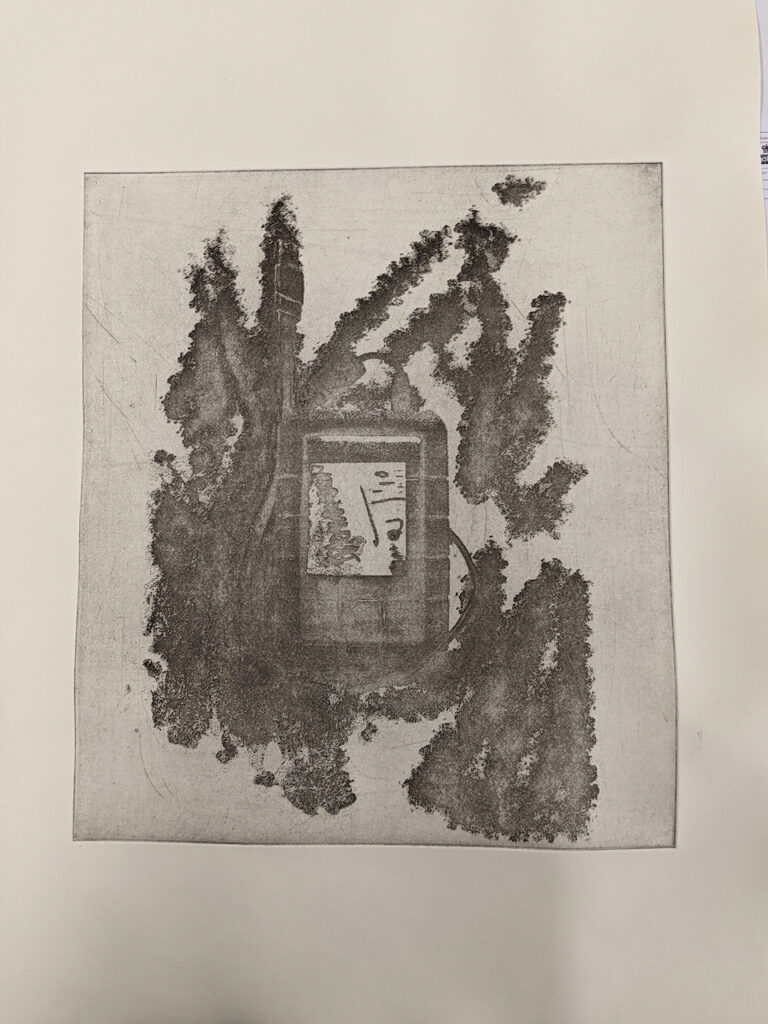
Hard Ground
To address this flat result Master Printmaker Justin Sanders suggested laying a hard ground on top of the etched image and draw into it with drypoint needle. A first drawing deployed lines and hatching around and into the shadows of the disk, cable and usb to distinguish them from the gestural background marks. A Sharpie pen was used to mask areas from further etching. Outline lines of the disk and linear shadows were added to ‘low’ light, as opposed to ‘highlight’ the disk structure.
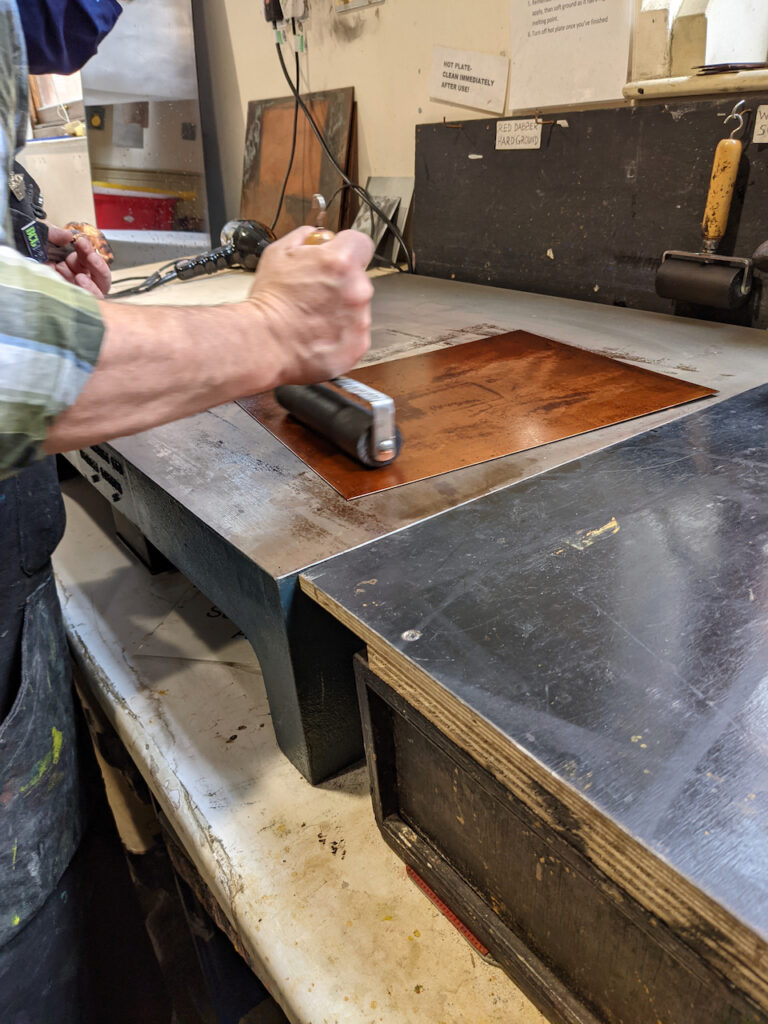
Rolling ground applied to plate 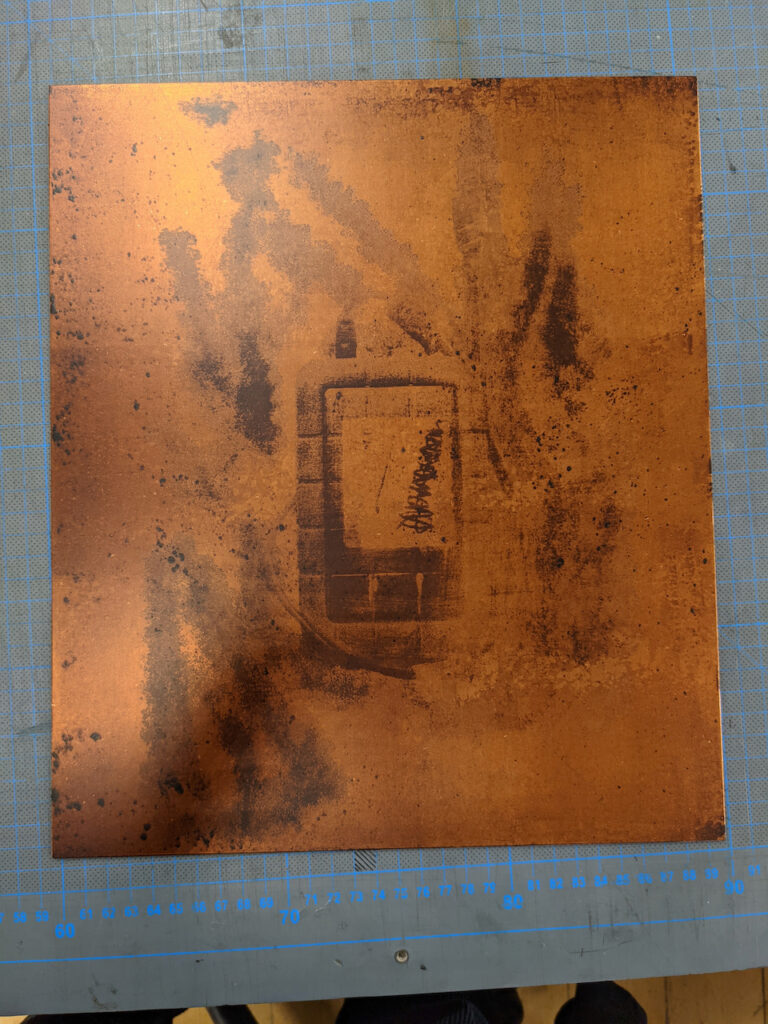
Hard ground 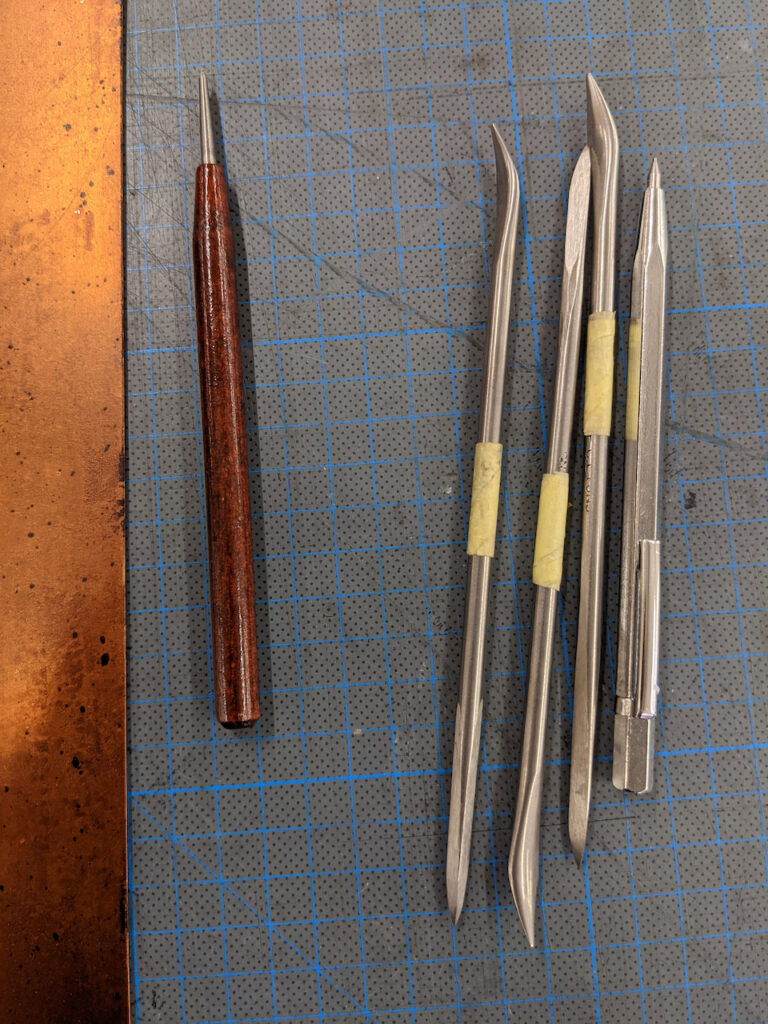
Dry point tools 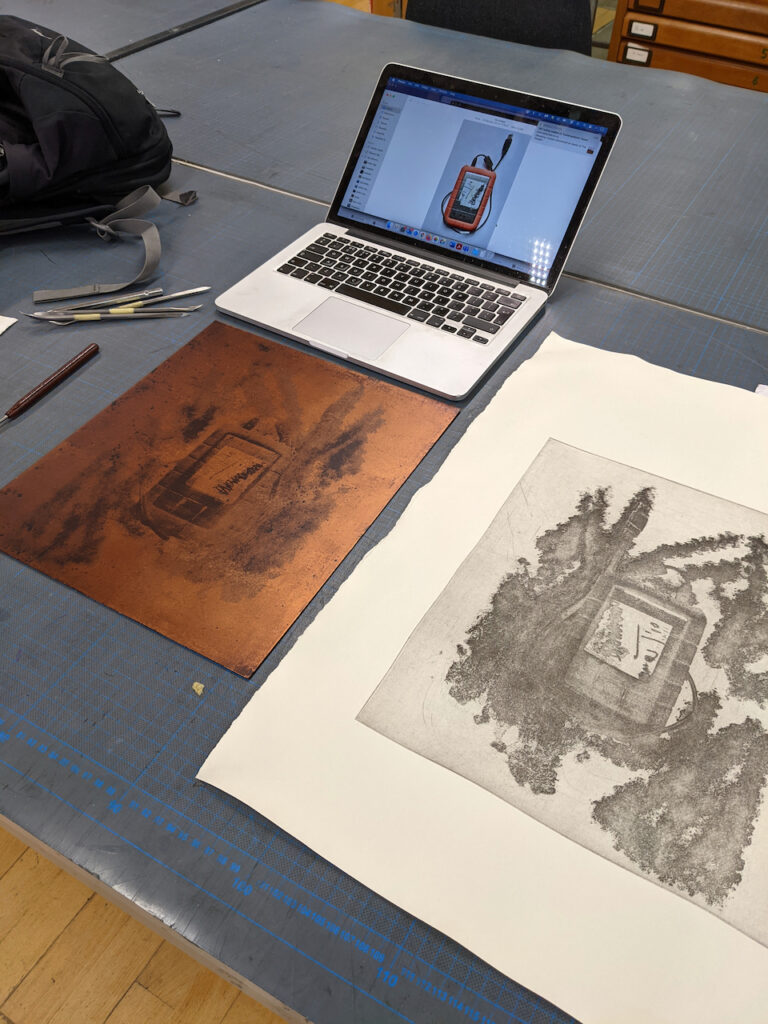
plate, drawing test on print and original photograph 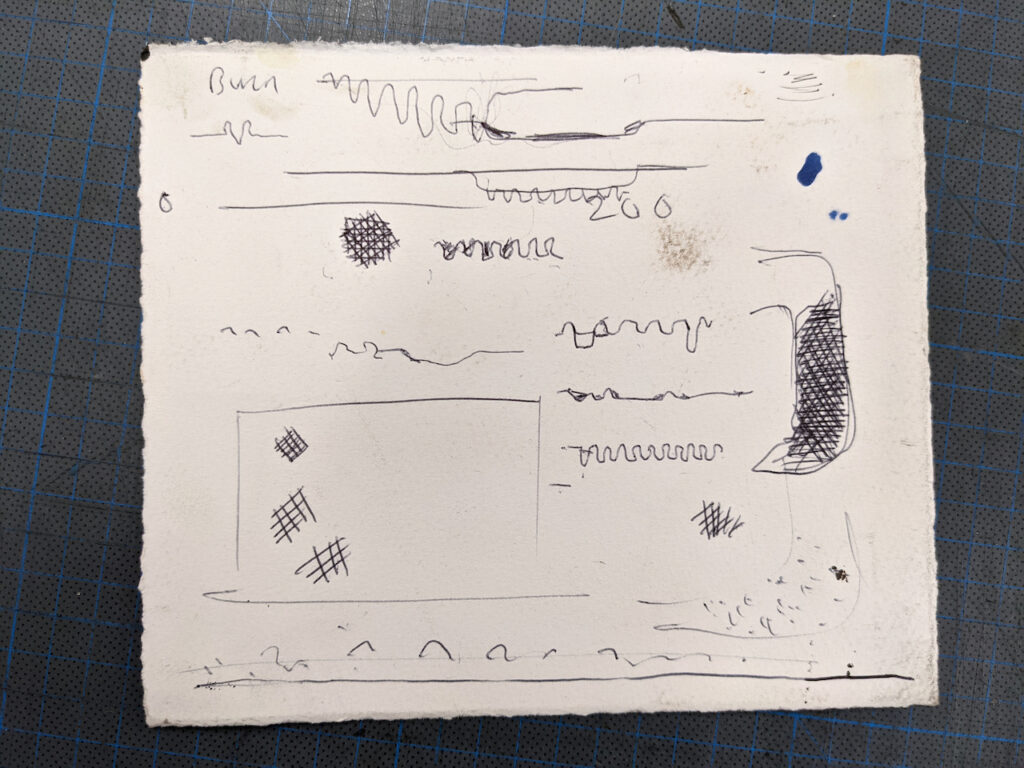
the range of acid biting theories 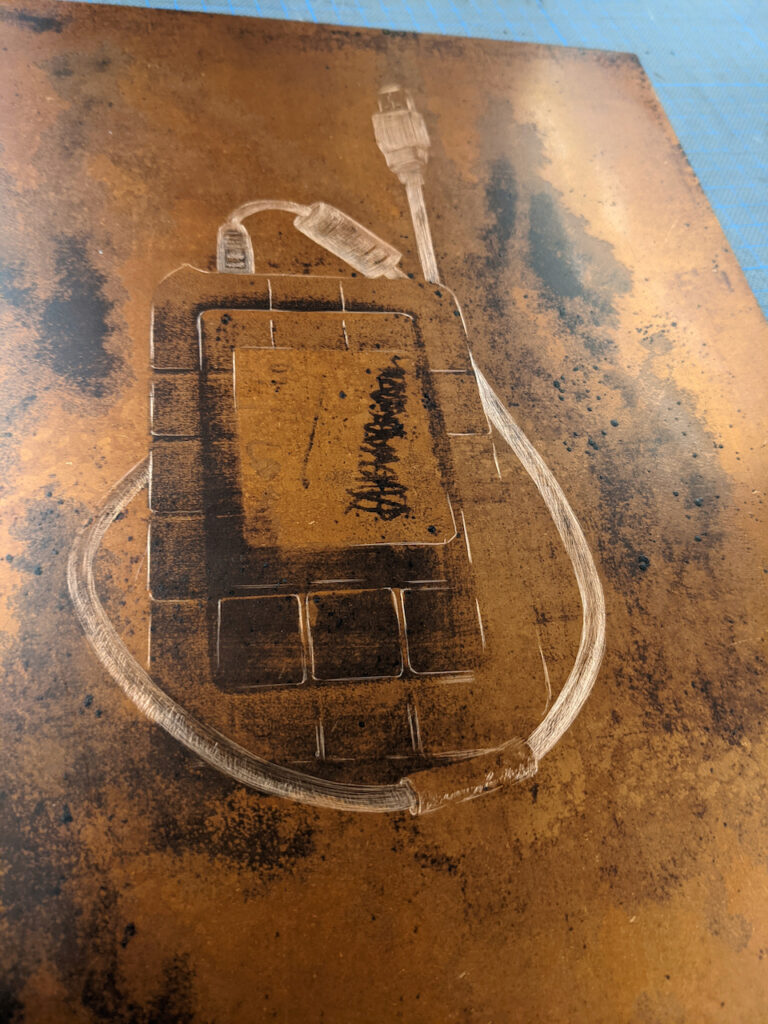
first drypoint 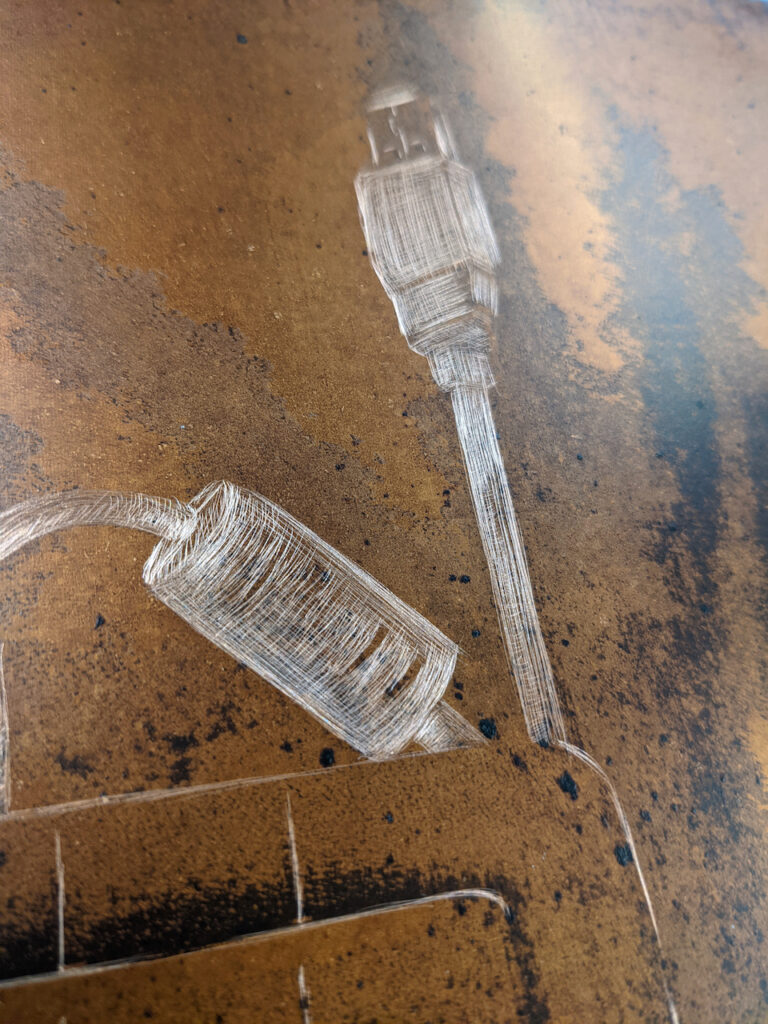

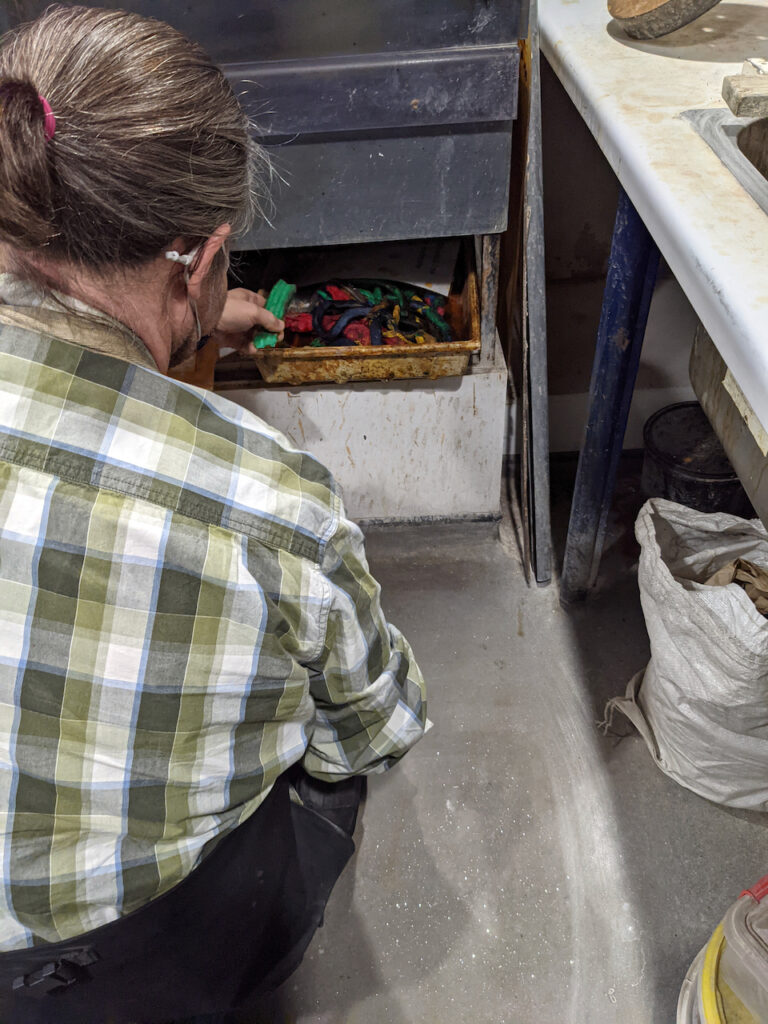
plasticine 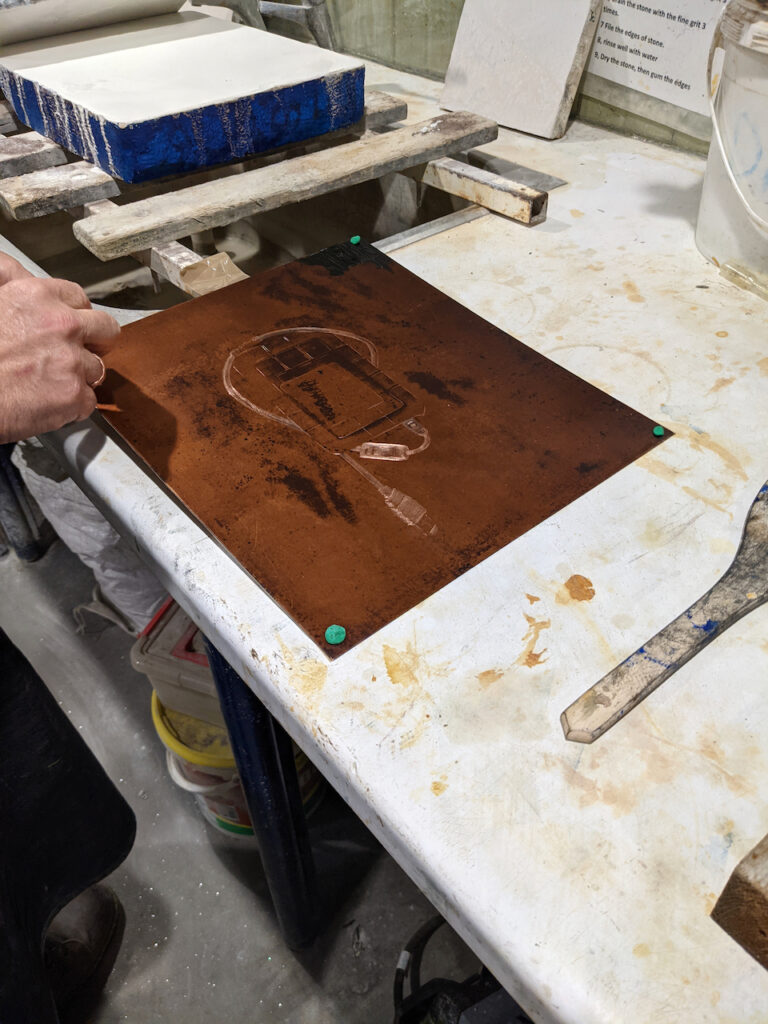
4 corners 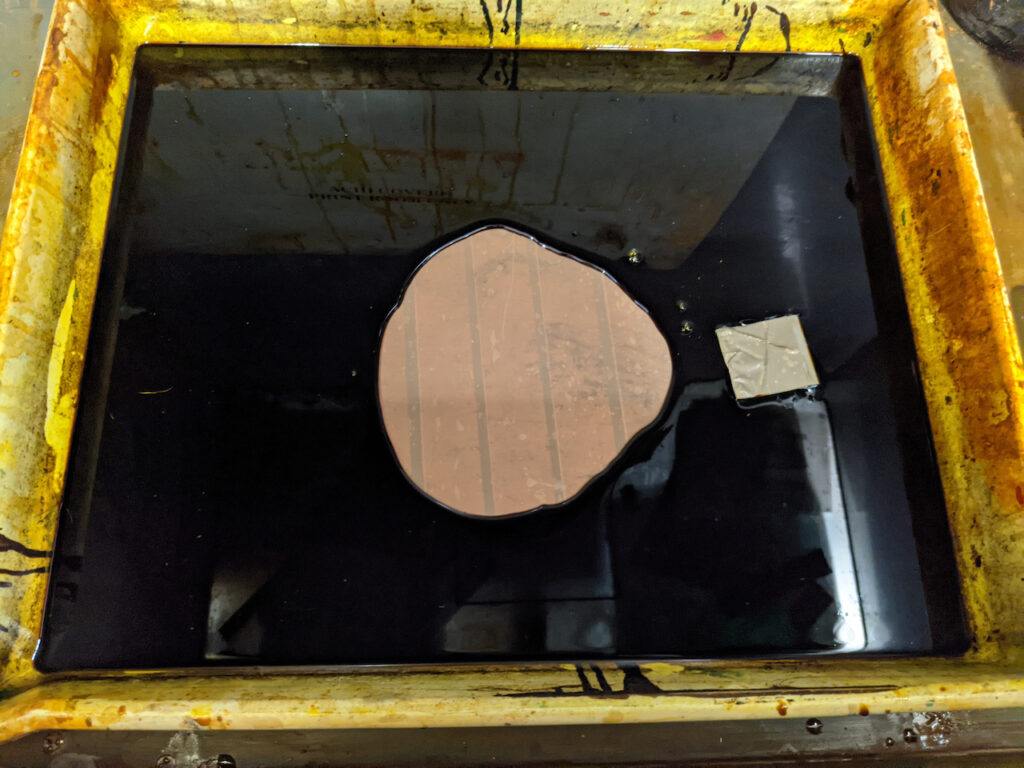
Face Down 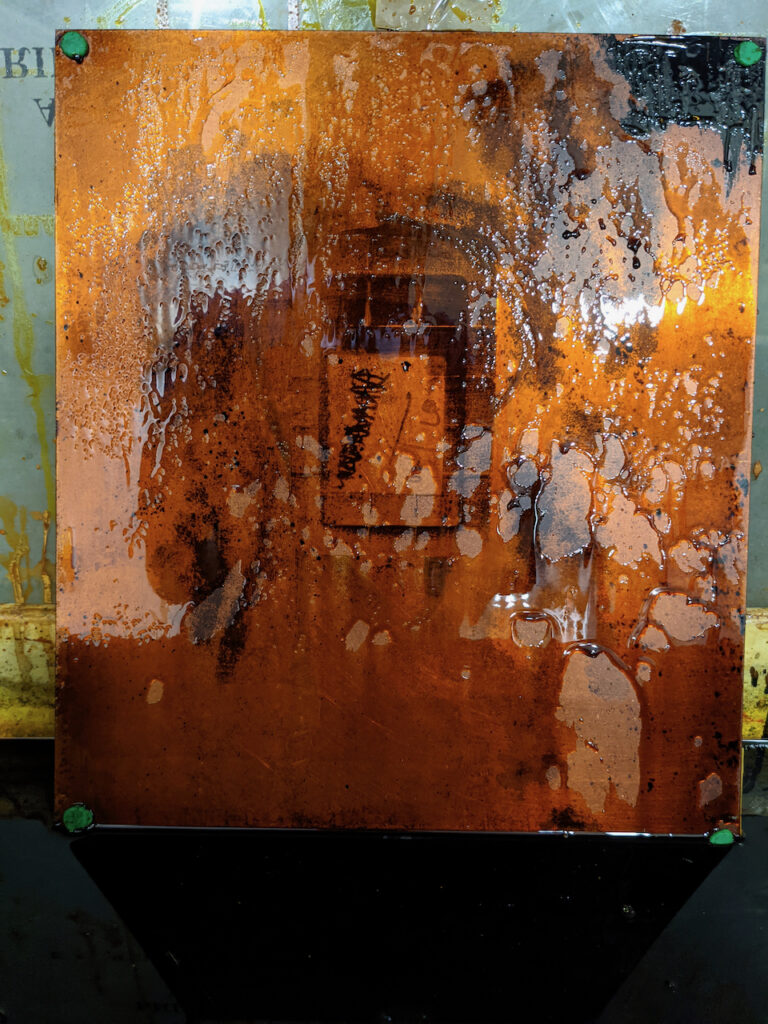
face down etch 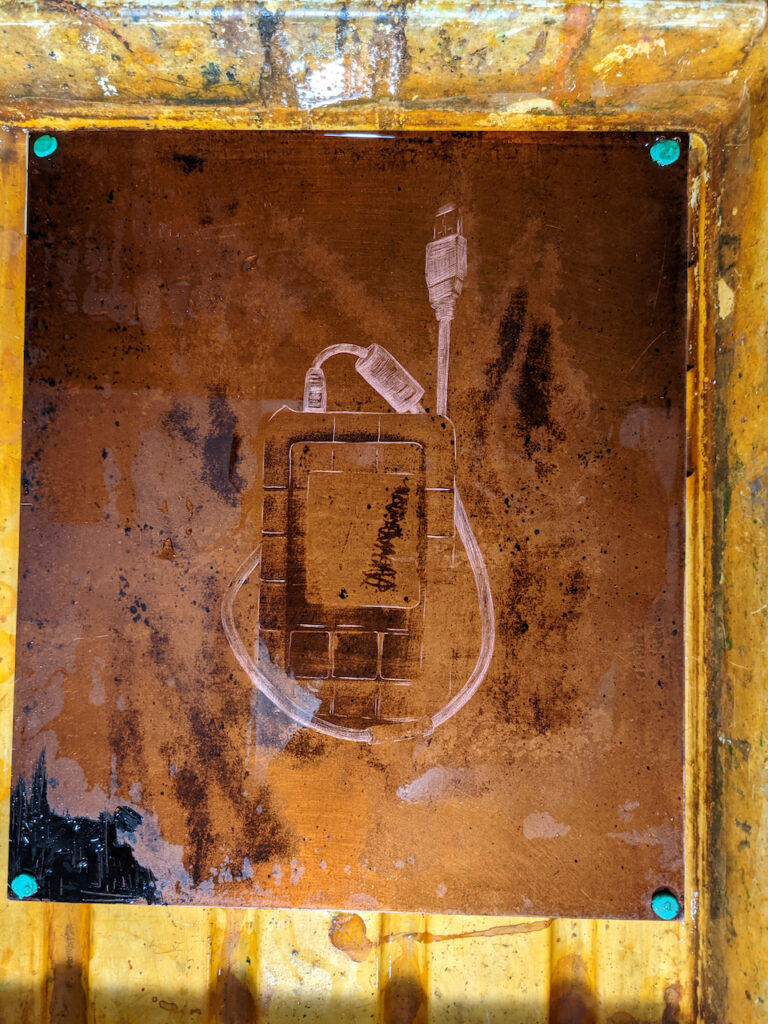
washed out 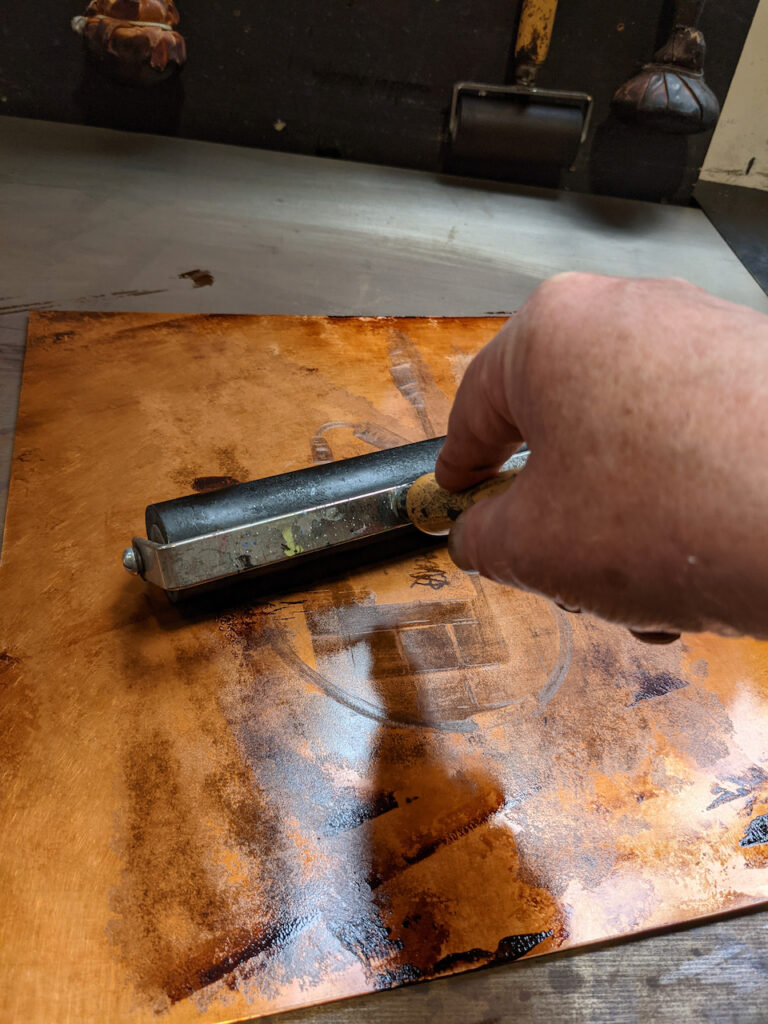
2nd hard ground 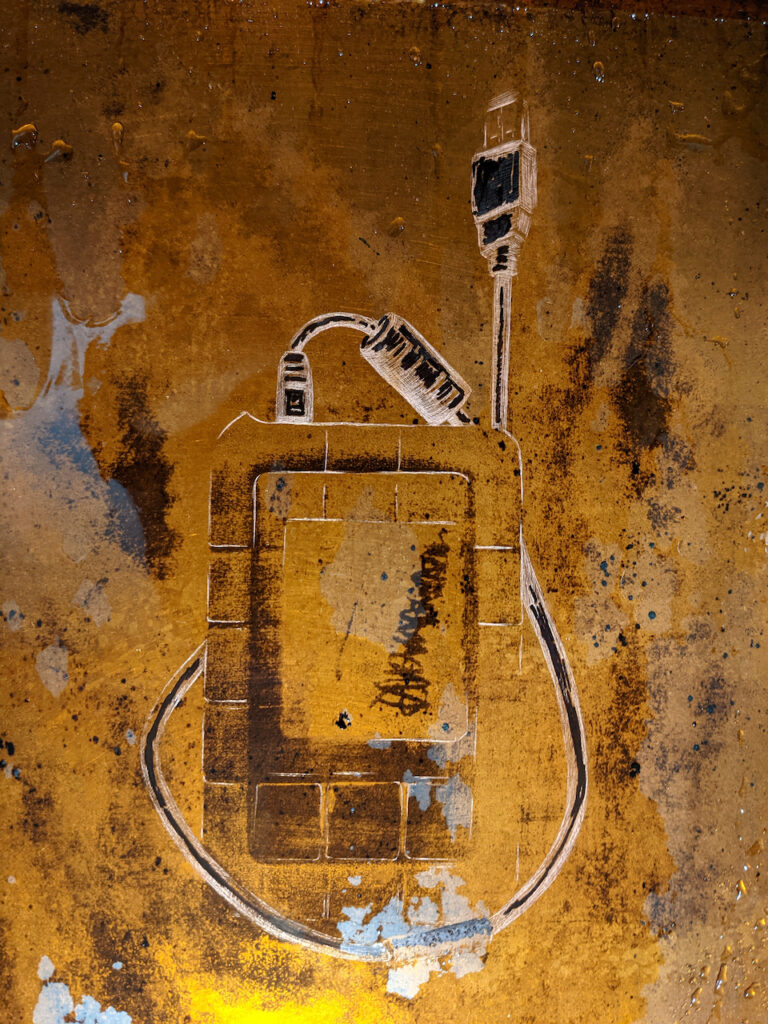
2nd drawing 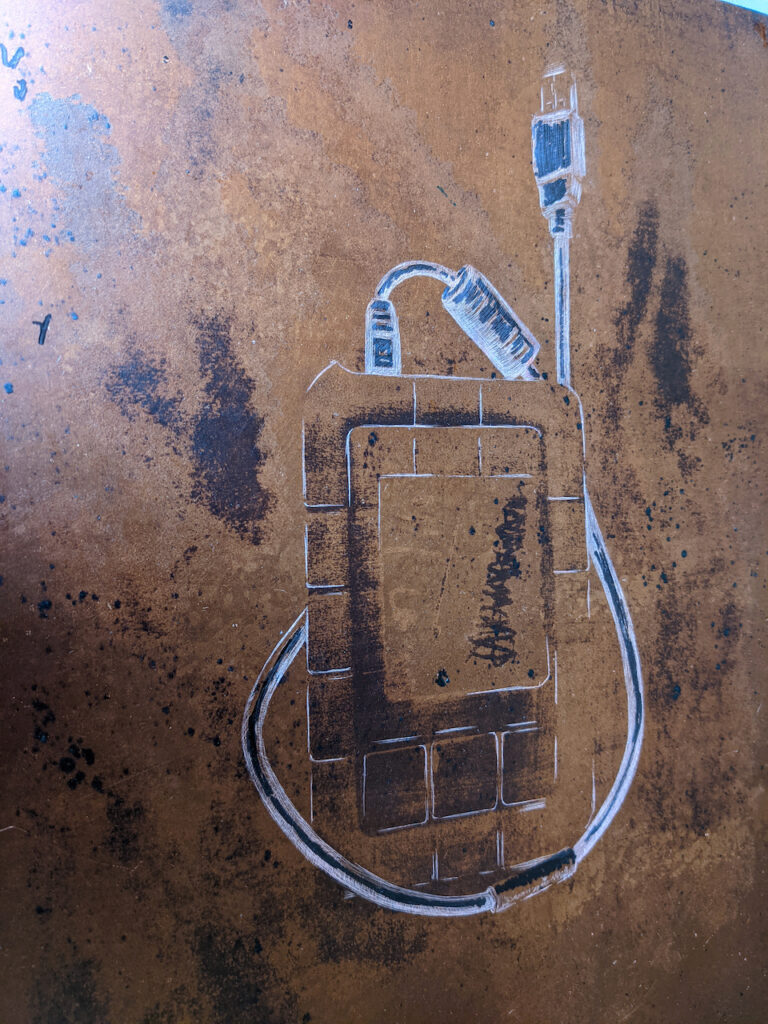
etched and washed out 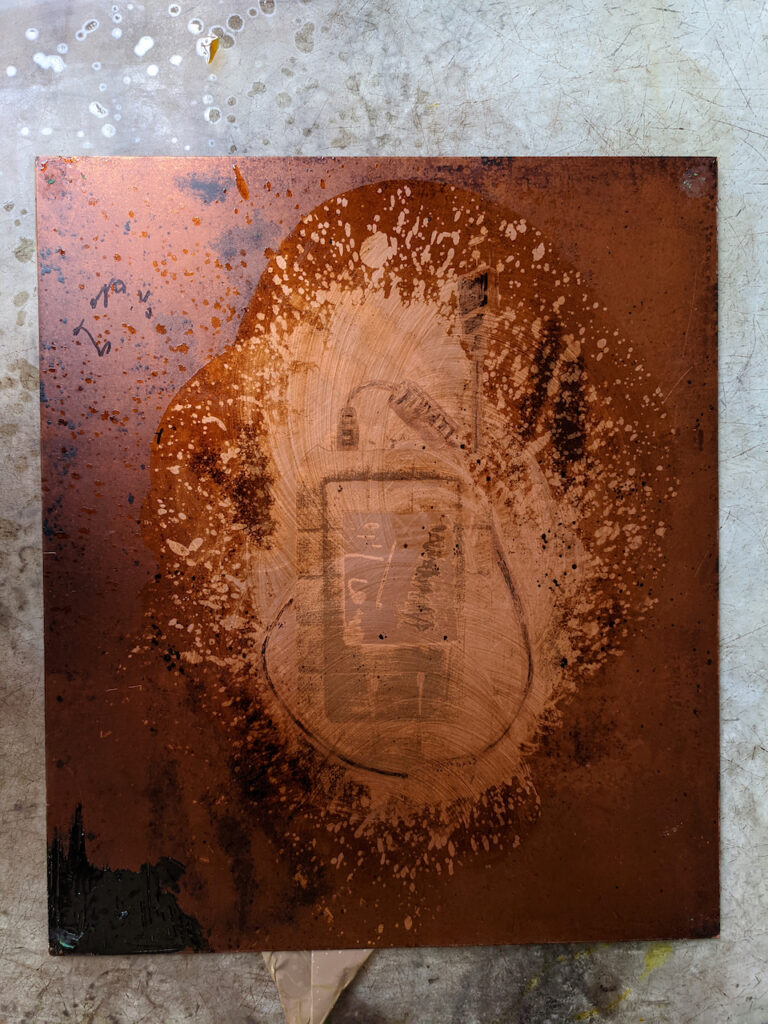
white spirit plate wash 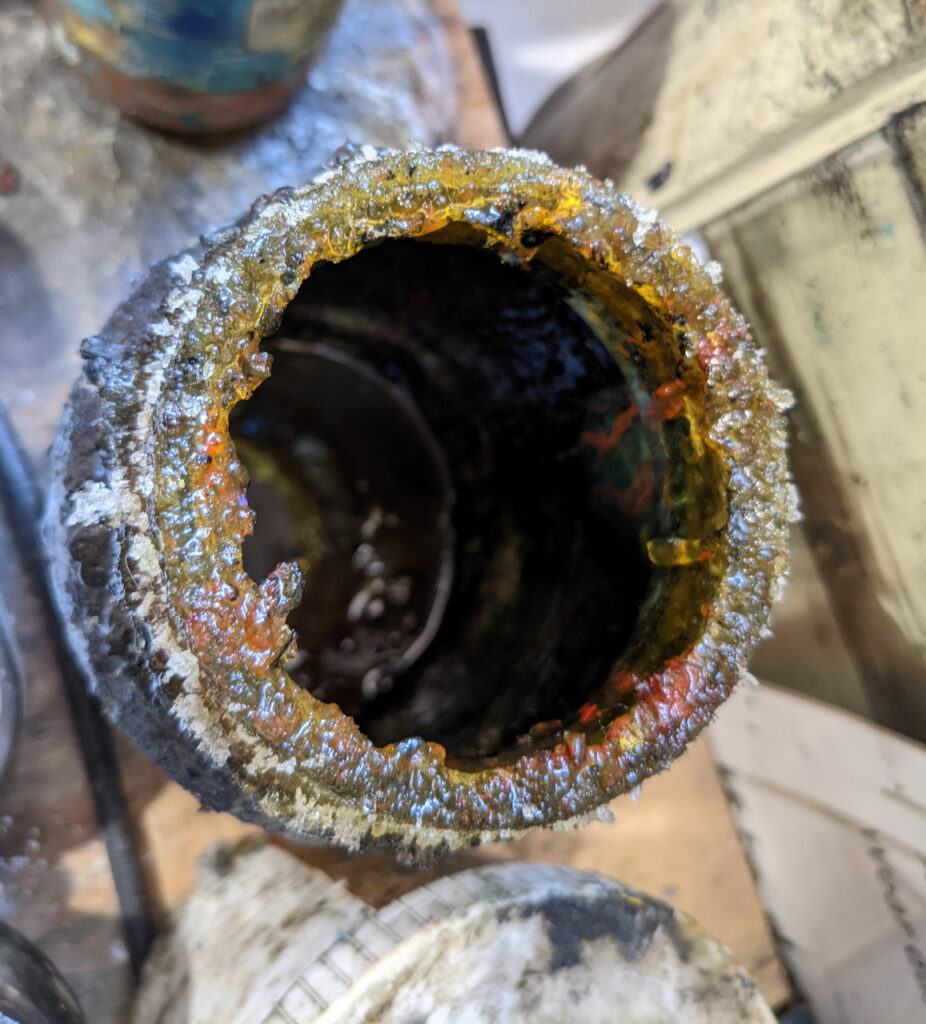
oil jar
Finally a roulette wheel was used to give additional random patterning to the background marks. A 30 minute etch was applied, reviewed and a second hard ground applied. Further cross hatching was made into the deepest shadow areas to give greater potential for dense blacks. The plate, now into its third day of preparation has had two aquatints, two hard grounds, 21, 30, 30 and 30 minute etches.
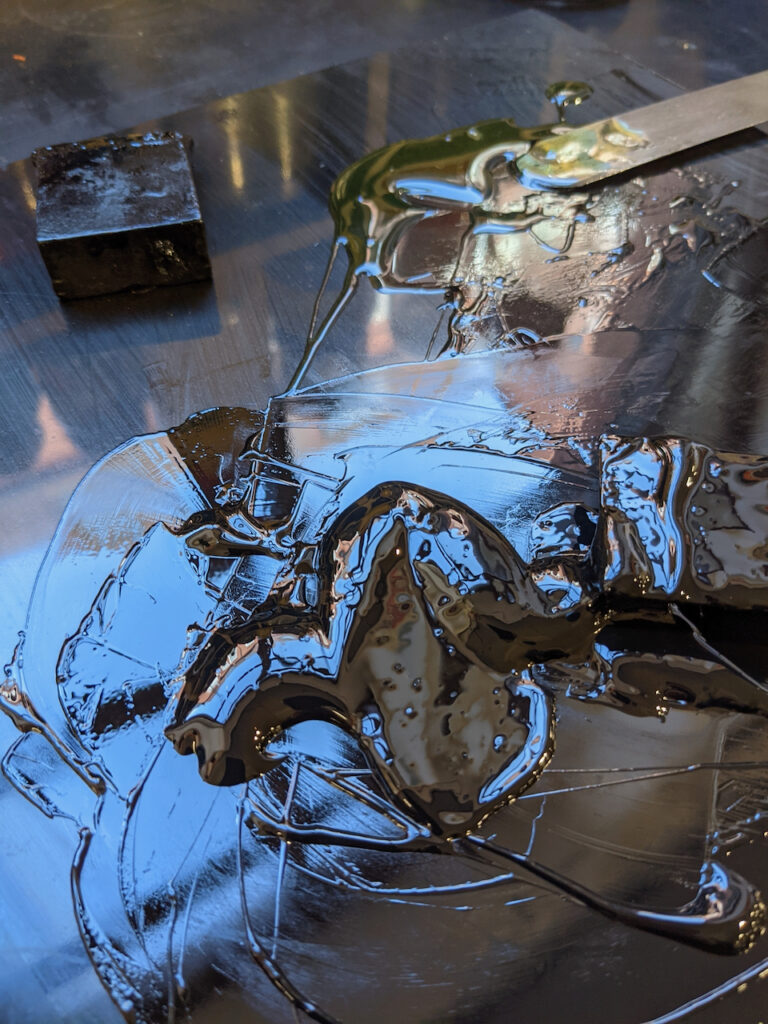
spreader, oil and etching black ink 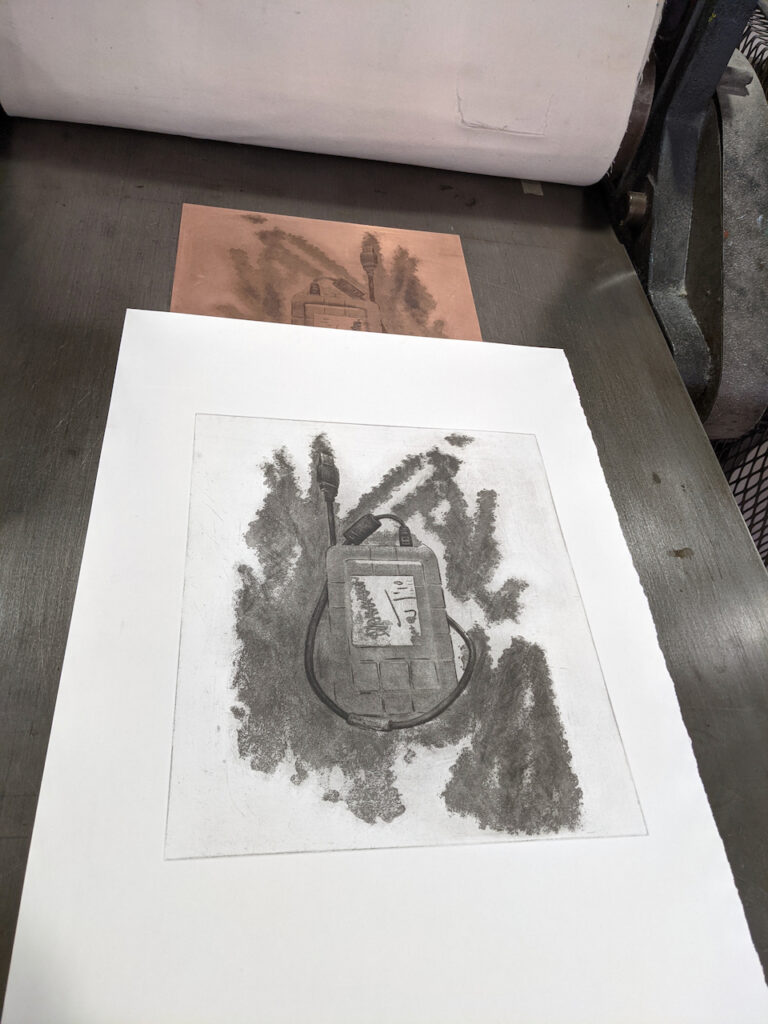
off the press
A proof was made on cartridge paper with the buttery ink, with attention paid to not over wipe the plate. Enough ink was held within the etched crevices and a positive, subtle result was revealed with the hard disk and cables defined by deep velvet blacks against the light grey background. Areas of the background marks held roulette marking that added to the overall textures. A second proof was made on to Fabriano Tiepolo paper.
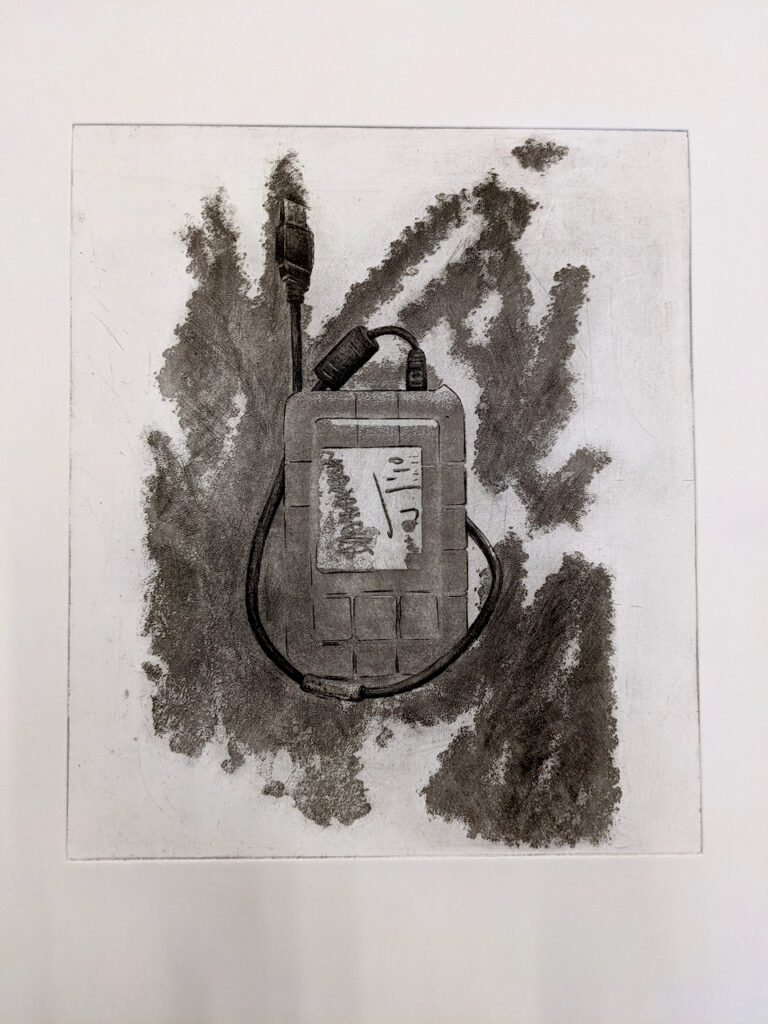
The finished jT’10 proofs now lie with the previous 21Ctools prints, while a final Lacie 2020 aquatinted print is made and the series can be reviewed for completeness and editioning. In contrast to the relatively planned first aquatint prints of the 21Ctools the jt’10 took Justin’s suggestion to react responsively to the plate and image as it developed through unexpected technical aberrations, rather than hold to a predetermined plan. Another example of achieving balances between Chance and Prediction in the making of prints.
Contemplative recordings of Face Down Etches
Useful links
Jan van de Velde IV And the Invention of Aquatint. https://www.jstor.org/stable/pdf/41824640.pdf?refreqid=excelsior%3A29ab8dd3300caae6888de35c6e43c395
Platemaking, Aquatint. https://www.hollymorrison.com/html/platemaking/aquatint.html

